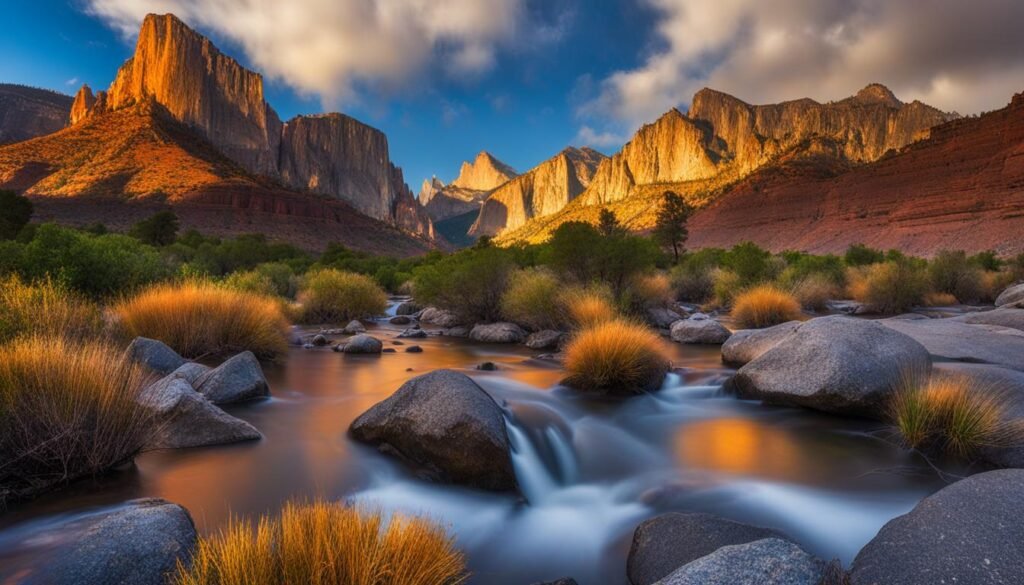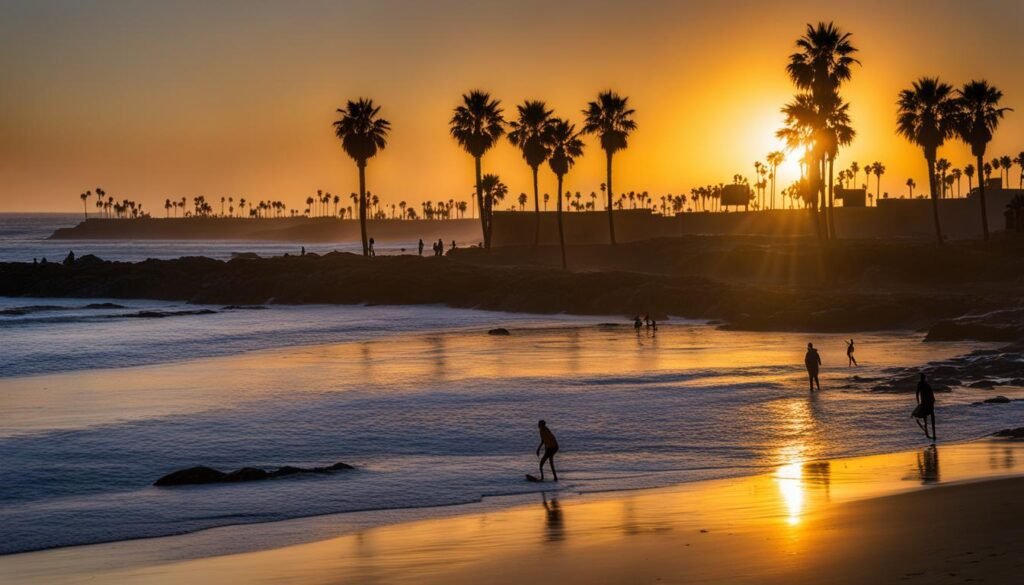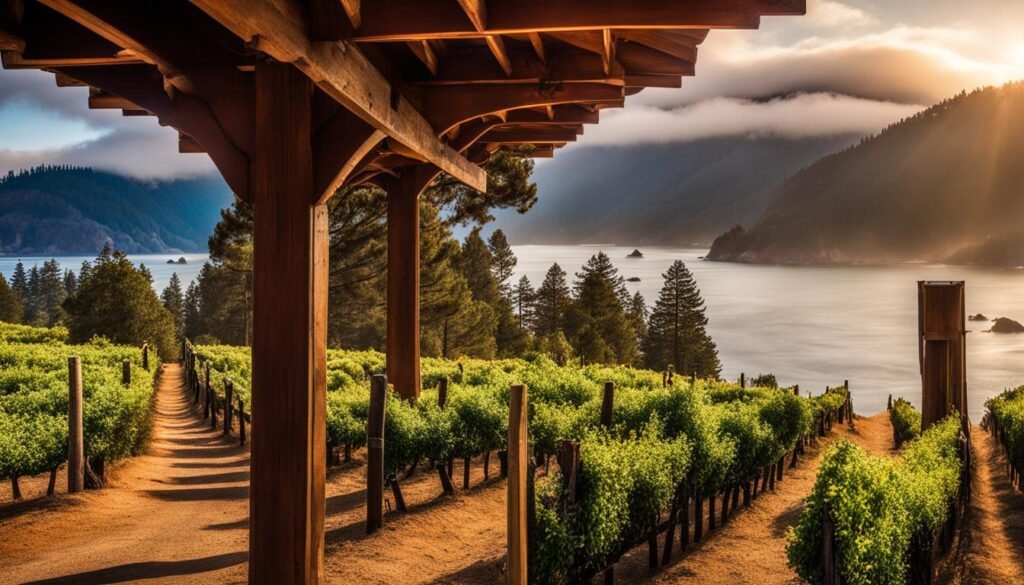When it comes to the geography of the United States, there is no shortage of diversity and beauty to discover. From coast to coast, the landscapes and natural features of America offer a captivating journey through its vast and varied terrain. Whether you’re planning an adventure or simply want to learn more about this remarkable country, let’s delve into the geography of the United States and uncover its fascinating highlights.
From the majestic Rocky Mountains to the rolling plains of the Midwest, the geography of America is a tapestry of breathtaking landscapes. With the Pacific Ocean to the west and the Atlantic Ocean to the east, the US is blessed with a vast coastline that boasts beautiful beaches and stunning coastal vistas. And let’s not forget the iconic landmarks that define the country, such as the Grand Canyon and Yellowstone National Park.
But the geography of the United States is not just about its landscapes; it’s also about its people and culture. The diverse climates and landscapes have shaped the way of life in different regions, influencing everything from cuisine to traditions and celebrations. Exploring the geography of America allows you to truly understand and appreciate the rich tapestry of this great nation.
Key Takeaways:
- The geography of the United States offers a diverse range of landscapes, from mountains to coastlines.
- Iconic landmarks like the Grand Canyon and Yellowstone National Park showcase the natural beauty of America.
- The geography of America has influenced its regional cultures and ways of life.
- Exploring the geography of the United States reveals the country’s rich tapestry and unique character.
- From outdoor adventures to cultural experiences, the US geography has something for everyone.
The United States: Land of Geographical Contrasts
The United States is known for its geographical contrasts. It boasts high mountains like the Rocky Mountains and the Appalachian Mountains, which provide stunning vistas and opportunities for outdoor activities such as hiking and skiing. The US also has vast plains and prairies, rich farmlands in the Midwest, and picturesque coastlines along the Atlantic and Pacific Oceans. The country is home to diverse ecosystems, including deserts like the Mojave Desert and the Great Basin, lush forests like the Redwood National Park and the Great Smoky Mountains, and wetlands like the Everglades. The US geography offers something for everyone, whether you’re an outdoor enthusiast, a nature lover, or a history buff.
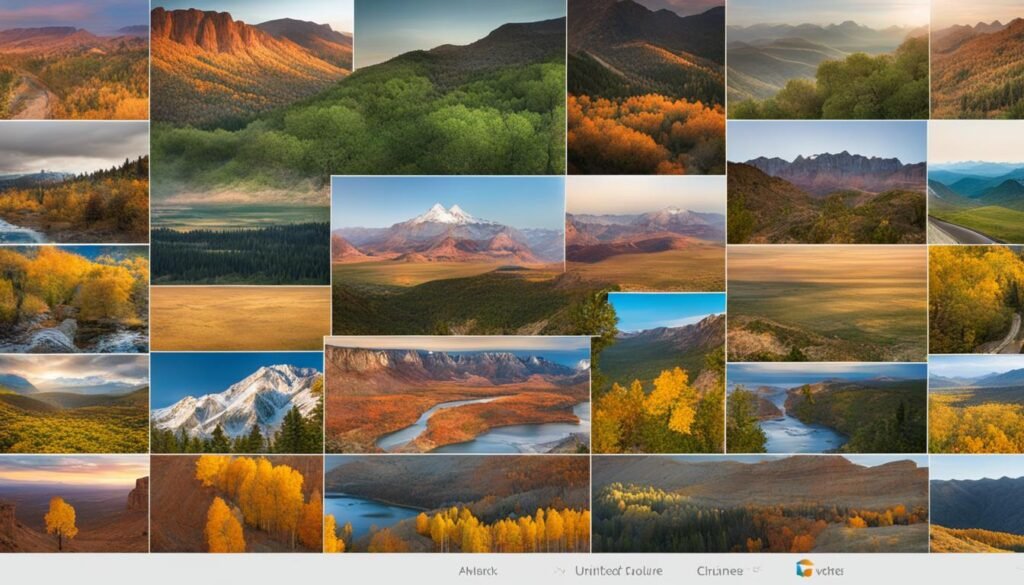

From the towering peaks of the Rocky Mountains to the vast plains of the Midwest, the geographical area of the USA is incredibly diverse. The landscape of the USA includes breathtaking natural wonders, from the expansive Grand Canyon to the magnificent Niagara Falls. With its varied geographical features, the United States of America is a paradise for adventure seekers and nature enthusiasts.
- The Rocky Mountains: Spanning over 3,000 miles, the Rocky Mountains are a majestic mountain range that stretches from Canada to Mexico. Offering spectacular views and opportunities for activities like hiking, camping, and skiing, the Rockies are a must-visit for outdoor enthusiasts.
- The Appalachian Mountains: With their lush forests and scenic trails, the Appalachian Mountains are a popular destination for hiking and exploring nature. The Appalachian Trail, one of the most famous long-distance hiking trails in the world, winds its way through this mountain range.
- The Great Plains: Located in the central part of the country, the Great Plains are vast, flat, and characterized by rich soil, making them ideal for agriculture. This region is often referred to as the “breadbasket of America” due to its extensive wheat production.
- The Atlantic and Pacific Coastlines: The coastal areas of the United States offer stunning beaches, vibrant cities, and diverse marine ecosystems. From the iconic beaches of California to the charming coastal towns of New England, the US coastline provides endless opportunities for relaxation and exploration.
The geographical features of the USA also include arid deserts like the Mojave Desert and the Great Basin, where unique ecosystems thrive. National parks such as Joshua Tree National Park and Death Valley National Park showcase the beauty and diversity of these desert landscapes.
Furthermore, the USA is home to lush forests and national parks that preserve the country’s natural heritage. The Redwood National Park in California is renowned for its towering redwood trees, while the Great Smoky Mountains National Park on the border of North Carolina and Tennessee offers breathtaking views and abundant wildlife.
The United States of America truly encompasses a wide range of geographical features, making it a paradise for nature lovers and adventurers. With its diverse landscapes and natural wonders, the geography of the United States offers endless opportunities for exploration and discovery.
Exploring the US States and Regions
The US is divided into 50 states and various regions, each with its own unique geography. The country offers a wide range of climates, from the arctic conditions of Alaska to the tropical climate of Hawaii. Let’s delve into the different geographical regions that make up the United States and discover the diverse landscapes and characteristics they possess.
The Northeast
The Northeast region of the US is known for its historic cities, such as New York City and Boston, and its stunning fall foliage. With charming coastal towns and picturesque landscapes, this region offers a blend of urban centers and natural beauty.
The Southeast
Heading down to the Southeast, you’ll encounter a region characterized by its warm climate, beautiful beaches, and vibrant culture. States like Florida and South Carolina attract visitors with their tropical vibes and diverse wildlife.
The Midwest
The Midwest, often referred to as America’s heartland, is known for its rich farmlands and open prairies. States like Illinois and Ohio are home to expansive plains that stretch as far as the eye can see.
The Southwest
The Southwest region boasts breathtaking desert landscapes and iconic natural wonders like the Grand Canyon. States like Arizona and New Mexico offer a unique blend of Native American culture, vibrant cities, and stunning red rock formations.
The West
The West is a region of contrasts, featuring snow-capped mountains, lush forests, and diverse coastal landscapes. From the majestic peaks of the Rocky Mountains in Colorado to the rugged coastline of California, this region offers endless opportunities for outdoor adventures.
Exploring the different states and regions of the US allows you to not only uncover the varied geography but also experience the diverse cultures and traditions that thrive within each area.
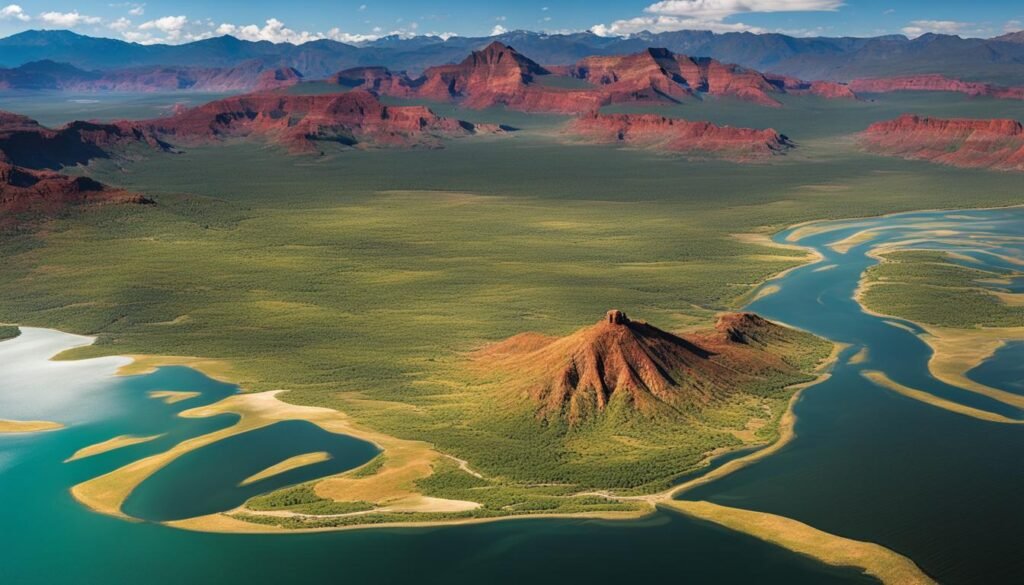

The Waterways of the United States
The United States is home to a vast network of waterways, including rivers, lakes, and coastlines. These water resources play a crucial role in the country’s geography, providing transportation routes, supporting diverse ecosystems, and offering recreational opportunities for residents and visitors alike.
One of the most notable features of the US waterways is its major rivers. The Mississippi River, Colorado River, and Missouri River are just a few examples of the many rivers that traverse the country. These rivers serve as important trade routes, connecting different regions and facilitating the movement of goods and people. They also support a rich variety of wildlife and plant species, contributing to the country’s biodiversity.
The rivers of the United States also offer endless possibilities for recreational activities. Boating, fishing, and kayaking are popular pastimes along these waterways, allowing enthusiasts to explore the scenic landscapes and enjoy the tranquility of nature.
Another remarkable water feature of the US is the Great Lakes, a group of freshwater lakes located in the northern part of the country. Comprising Lake Superior, Lake Michigan, Lake Huron, Lake Erie, and Lake Ontario, the Great Lakes are not only a significant water resource but also a major tourist attraction. Their stunning beauty and expansive coastlines draw visitors from around the world, offering opportunities for boating, swimming, and beach activities.
The Atlantic and Pacific Oceans also contribute to the US geography, with a vast coastline that stretches for thousands of miles. The beaches and coastal landscapes along these oceans are renowned for their natural beauty and recreational opportunities. Whether you’re looking for a relaxing beach vacation or thrilling water sports, the coastal regions of the United States have something to offer.
Exploring the waterways of the United States allows you to appreciate the country’s natural beauty and understand the vital role that these resources play in its geography. From the majestic rivers to the Great Lakes and stunning coastlines, the diverse waterways of the US provide endless opportunities for adventure, exploration, and relaxation.
Key Points:
- The United States has abundant water resources, including rivers, lakes, and coastlines.
- Major rivers like the Mississippi, Colorado, and Missouri play a significant role in the US geography.
- The Great Lakes are the largest group of freshwater lakes in the world.
- The US coastline along the Atlantic and Pacific Oceans attracts tourists with its beautiful beaches and coastal landscapes.
- Waterways offer transportation routes, support ecosystems, and provide recreational opportunities.
The Geographical Diversity of US National Parks
The United States is renowned for its national parks, which showcase the country’s geographical diversity and natural wonders. From the iconic Yellowstone National Park, with its geysers and hot springs, to the breathtaking Grand Canyon National Park, with its dramatic cliffs and colorful rock formations, the US national parks offer a glimpse into the country’s unique landscapes. Other notable national parks include Yosemite National Park, Everglades National Park, and Glacier National Park.
Each park represents a different geographical region of the US and provides opportunities for outdoor activities like hiking, camping, and wildlife viewing. Exploring the national parks allows you to immerse yourself in the geographical wonders of the United States.
Conclusion
The United States is a country with a remarkable geographical diversity that never fails to captivate explorers and nature enthusiasts. From the grandeur of the Rocky Mountains to the tranquility of the Great Plains, there is no shortage of breathtaking landscapes to discover.
Whether you crave thrilling outdoor adventures like hiking through the lush forests of the Great Smoky Mountains or prefer the serenity of relaxing on pristine beaches along the Atlantic and Pacific coasts, the US offers a myriad of experiences for every taste.
Immerse yourself in the diverse climates and natural features that make up the tapestry of US geography. From the mighty rivers like the Mississippi that flow through its heartland to the majestic national parks that preserve its most treasured wonders like Yellowstone and Yosemite, the US presents a playground for nature lovers.
So, grab your hiking boots, pack your camera, and set forth on an unforgettable journey to explore the geographical marvels of the United States. From coast to coast, you’ll discover a country that never ceases to amaze and leaves an indelible mark on your heart.
FAQ
What is the geography of the United States like?
The geography of the United States is incredibly diverse, with a variety of landscapes and climatic zones. From the majestic mountains of the Rocky Mountains and the Appalachian Mountains to the expansive prairies of the Midwest and the deserts of the Southwest, the US offers a wide range of geographical features to explore.
What are some geographical features of the United States?
The United States is known for its geographical contrasts. It boasts high mountains like the Rocky Mountains and the Appalachian Mountains, vast plains and prairies in the Midwest, and picturesque coastlines along the Atlantic and Pacific Oceans. The country is also home to diverse ecosystems, including deserts like the Mojave Desert and wetlands like the Everglades.
How is the United States divided geographically?
The United States is divided into 50 states and various regions, each with its own unique geography. The country has a wide range of climates, from the arctic conditions of Alaska to the tropical climate of Hawaii. The US can be divided into several geographical regions, including the Northeast, Southeast, Midwest, Southwest, and West, each with its own distinct landscapes and characteristics.
What are some major waterways in the United States?
The United States is blessed with abundant water resources, including numerous rivers, lakes, and coastlines. Major rivers such as the Mississippi River, the Colorado River, and the Missouri River play a significant role in the US geography. The country also has the Great Lakes, which are the largest group of freshwater lakes in the world. Additionally, the US has a vast coastline along the Atlantic and Pacific Oceans.
What are some notable US national parks?
The United States is renowned for its national parks, which showcase the country’s geographical diversity and natural wonders. From Yellowstone National Park and its geysers and hot springs to the Grand Canyon National Park with its dramatic cliffs and rock formations, the US national parks offer a glimpse into the country’s unique landscapes. Other notable parks include Yosemite National Park, Everglades National Park, and Glacier National Park.

